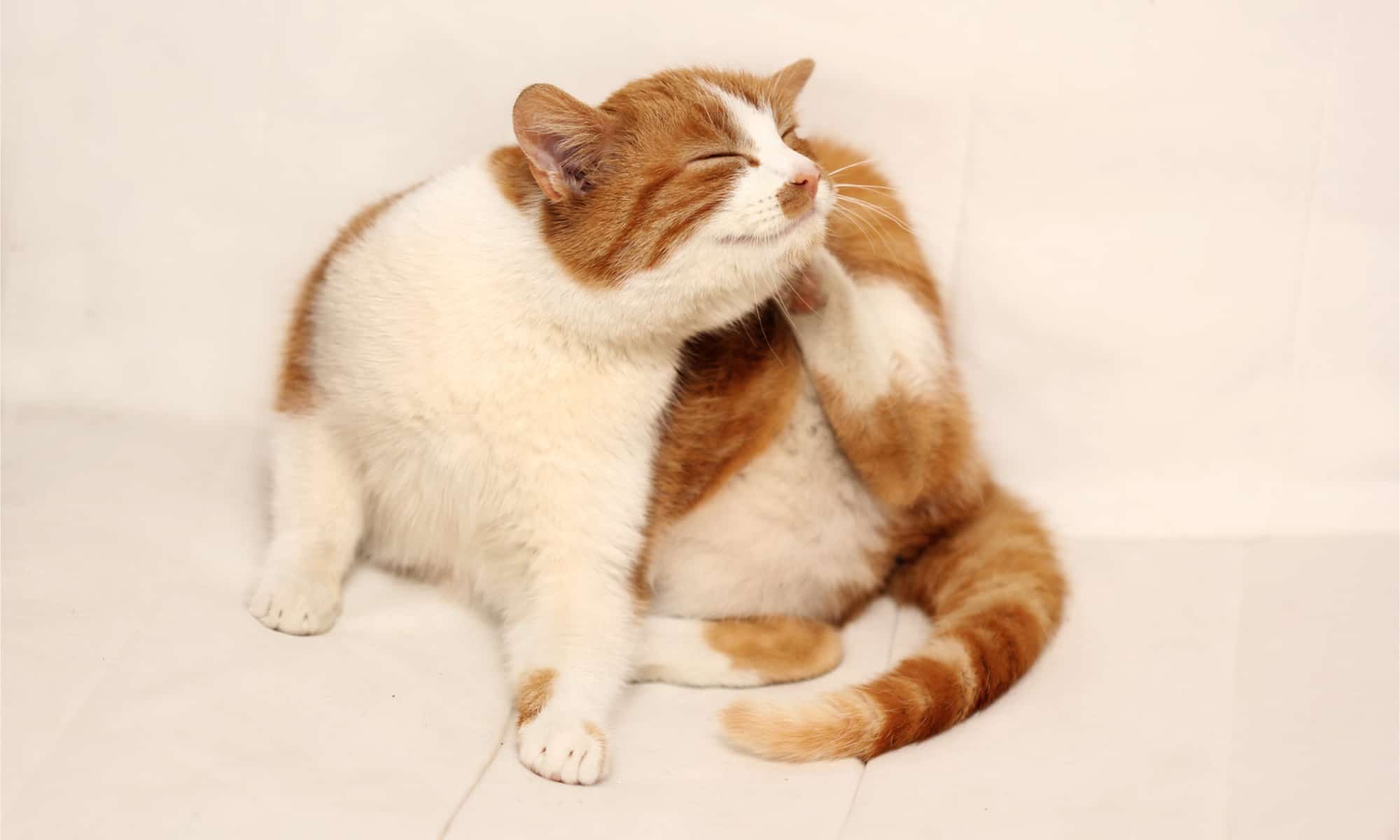Over time veterinary medicine has derived from human medicine allowing some human medications to be administered to animals. Benadryl is a common antihistamine that blocks histamine released in the body that is triggered by certain allergens. Just like in humans, this medication can be used for the same reason for cats. Although this antihistamine is safe to give cats, it is important to consult with a veterinarian before use for various reasons. This post will highlight the effects of Benadryl on cats and how much is safe to give.

Cats with mild anxiety can receive Benadryl up to three times a day.
©savitskaya iryna/Shutterstock.com
When and why do cats need Benadryl?
As mentioned before, cats may need Benadryl to treat allergic reaction symptoms. This type of antihistamine can be given before an allergic reaction or after. Here are common situations that cats may need Benadryl.
- Insect bites. Cats can develop local reactions on the skin surface causing your cat to constantly scratch. Benadryl will not treat the insect bite itself; however, the need to itch will no longer be a desire.
- Allergies. Just like humans, cats can have allergies to pollen, dust, or certain smells. This can cause sneezing, wheezing, watery eyes, or a runny nose.
- Traveling. When using the drowsy formula of Benadryl, can help your cat relax or sleep during short traveling periods.
- Vaccines. Cats can be sensitive to vaccines. Mild vaccine reactions can include soreness or itchiness at the site. Benadryl is to be given at least 30 minutes before vaccines are given, which can help decrease the chances of symptoms occurring.
Side effects of Benadryl
Like any medication, Benadryl can have side effects and should be used with caution. These side effects include:
- Drowsiness
- Dry mouth
- GI upset
- Lethargy
- Lack of appetite
- Diarrhea
- Vomiting
Although these side effects are considered normal with taking Benadryl, it is important to understand how it can either make your cat’s symptoms worse. After giving Benadryl for the first time, monitor your cat closely over a 1-2 hour period to notate any negative side effects your cat could be experiencing.
Signs of overdose
Before giving Benadryl, always double-check for the recommended dose. In the event of an overdose, immediately take your cat to the emergency clinic for further evaluation. Here are some common signs of what overdose can look like in your cat:
- Lethargy
- Excitement
- Dry mouth
- Respiratory distress
- Seizures
- Coma
- Death
When to not give Benadryl
Just like any medication, there may be indications that you should never give your cat this type of antihistamine. If your cat may have any of the following conditions below or you are unsure, consult with your veterinarian. Below are examples of when giving Benadryl should be avoided.
- High blood pressure. Antihistamines can raise blood pressure
- Heart disease or any chronic medical condition. Benadryl is pretty safe; however, it can counteract other medications that your cat may already be on.
- High anxiety. Benadryl can help with very mild anxiety, for traveling purposes however, if your cat is already high anxiety giving this can make it worse.
Alternatives to Benadryl
If Benadryl is not an option for your cat, other great antihistamines can be used. Alternative antihistamines work similarly to Benadryl; however, there may be different side effects or recommended dosages to give. When consulting with your Veterinarian, ask which anti-histamine, if any, would be a good fit for your cat. If there are not any that your Veterinarian is recommending because of health concerns your cat may have, your vet may prescribe a different type of medication specific to your cat. Here are the alternatives that can be used to Benadryl.
- 24-hour relief Zyrtec, 10mg tablet
- 24-hour Clariting, 10mg tablet
- 24-hour Xyzal Allergy
Benadryl Dose Recommendations
Cats under 12 lbs can be given children’s liquid,12.5mg/5ml; whereas cats that weigh more than 12 lbs can be given the 25mg tablet form of Benadryl.
Benadryl Dosing Chart
| Weight | Dosage |
| 1lb-5.9lb | 0.4mls-2mls |
| 6 lb-11.9lb | 1.6mls-4.5mls |
| 12lb-25.9lb | ½ – 1 tablet of 25mg tablet |
| 25.1lb-3lb | 1 to 1 ¼ tablet of 25mg tablet |

Fleas or biting insects can cause skin irritation, causing your cat to constantly scratch.
©Oakland Images/Shutterstock.com
Summary
When purchasing Benadryl for your cat there are a few key points to keep in mind:
- The weight of your cat
- Diphenhydramine HCl should be the only active ingredient
- Know the dose
- What is the reason you are giving it
Benadryl is a great over-the-counter medication to have in the event of an emergency, but it is not the sole remedy for maintaining the issue at hand. Always consult with a veterinarian if you are unsure if Benadryl is the best medication for your cat.
Thank you for reading! Have some feedback for us? Contact the AZ Animals editorial team.








